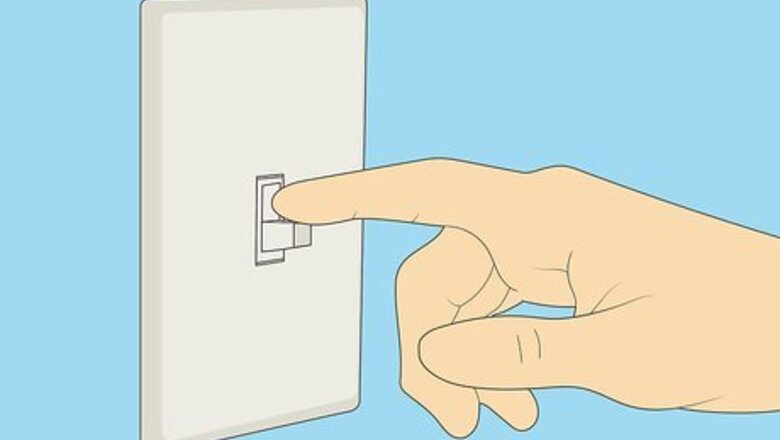
views
X
Expert Source
Marvin WooLicensed Electrician
Expert Interview. 1 December 2021.
Removing the Existing Bulb
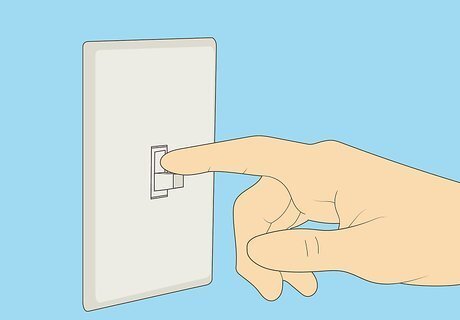
Turn the light off. Turning the light off ensures that there is no chance of getting shocked when you change the light bulb. Make sure that anyone in the same room also knows not to turn the light back on while you are working on it. If you are taking out an incandescent or halogen bulb, you will need to wait 5–10 minutes after turning the light off for the bulb to be cool enough to handle. An LED bulb, on the other hand, will always be cool enough to handle.
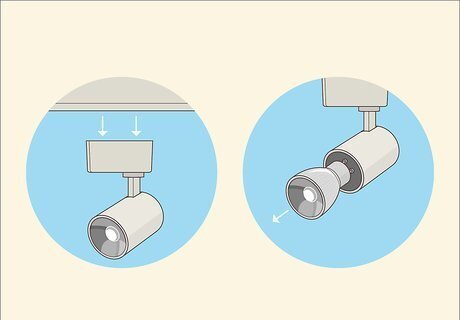
Determine if you need to disengage the fixture to get the bulb out. Depending on the type of track lighting you have, it may be necessary to take the light off the track before removing the light bulb. In general, if you can simply unscrew the light bulb out of the front of the fixture, then you don't need to take it down. If you need to take a cover or piece off of the fixture to get at the light bulb, it's probably easier to take it off the track before changing the bulb. If you have the instructions that came with the track lighting system, consult it for information. You can also research the fixture online if it is particularly difficult to figure out. To take a fixture off of a track-lighting system, you typically need to rotate the base of the light. Loosen any set screws, pins, or locking rings that keep it in place on the track and then turn the fixture counter-clockwise 90 degrees. The whole thing should pop out of place and come out into your hand.
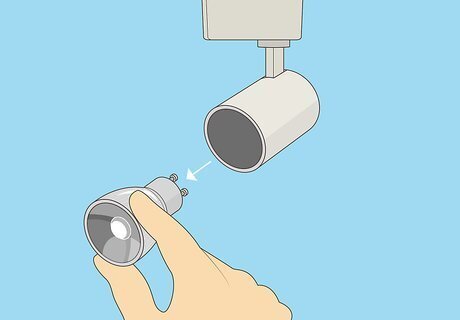
Remove the bulb from the light socket. Traditional incandescent, CFL, and LED bulbs are removed by unscrewing them counter-clockwise. However, track lighting often has specialty bulbs that are unscrewed, unplugged, or twisted and locked into place. Inspect the bulb before trying to take it out to see if you can identify how it is removed. Move it side to side and pull it towards you gently, watching to see if any movement occurs. With one of these motions, the bulb should begin to move. You may need to take a cover off of the bulb to access it. If you can't see the surface of the bulb, explore the fixture to figure out how to get to it. Covers are usually kept in place with a small set screw or clip. If it is not self-explanatory how the bulb is disengaged, consult the installation instructions that came with the fixture.
Picking a Replacement Bulb
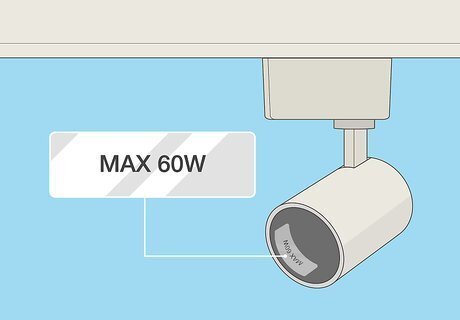
Follow the wattage guidelines of the fixture. Look at the interior of the light socket for a label. This label tells you the maximum wattage bulb you can use in the light. It is important that you do not put a bulb in a light fixture that that has a higher wattage, as this could create a fire hazard or a malfunction in the light. All light fixtures have a wattage that they are rated for. This rating takes into account the amount of power the pieces of the light fixture can handle and the heat that will be produced when the light is on.
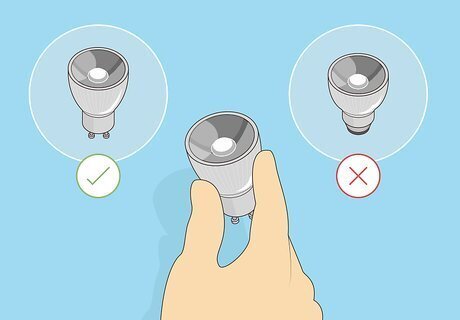
Purchase a light bulb that matches the one that burned out. When changing a bulb it is often easiest to simply buy the exact same bulb. For a specialized bulb, take the bulb that has burned out with you to the store so you can identify an appropriate replacement. Make sure both the shape of the bulb and the connecting part of the bulb match the old one. This will ensure that you pick the pick the right bulb. If you have a stash of light bulbs in your home, go through it to find a bulb that matches the one that has burned out.
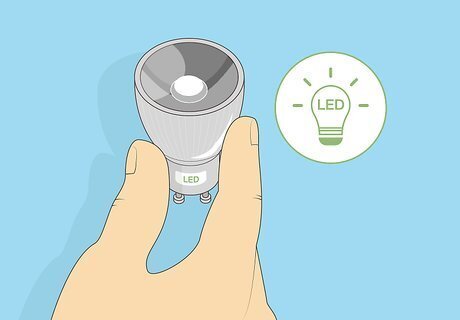
Use an energy-efficient bulb, if possible. If your light fixture is compatible with a variety of bulb types, explore your options. There may be a bulb that will give you just as much light as your old bulb but will use less energy to produce it. For example, if your track lighting currently uses traditional incandescent bulbs, consider replacing them with LED bulbs. If you have been wanting more light output from your track lighting, using energy-efficient bulbs can help you with this goal as well. Since they draw less energy, you can use a brighter bulb and still keep it under the maximum wattage for the fixture.
Installing the New Bulb
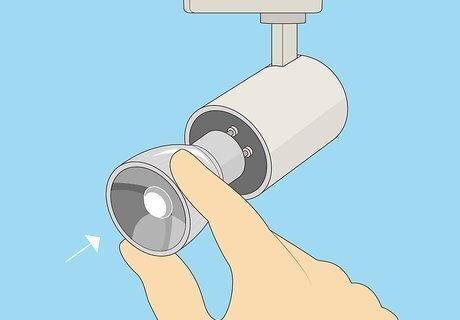
Insert the new bulb into the socket. Put the base of the new bulb into the socket of the fixture. Then twist it or angle it into place, depending on the type of bulb you are using. Install the new bulb with the opposite movement that you used to take out the old bulb. Be careful to not over-tighten or otherwise damage the bulb by handling it roughly. With quartz halogen bulbs, it is important to not touch the surface with your bare hands. The oils from your hands will cause the bulb to fail prematurely. Look at the packaging of the bulb you purchased and, if your bulb should not be touched directly, put on a glove before opening the package and touching it.
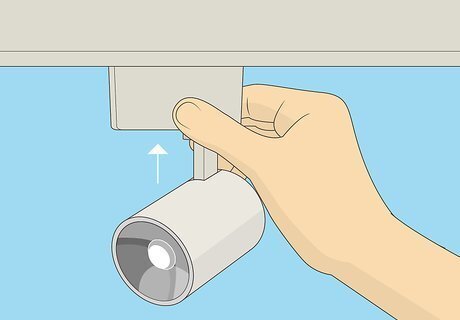
Reinsert the light into the track, if necessary. Insert the connection end of the light into the track. Turn the base of the light clockwise until it cannot be moved any further, typically 90 degrees. If your fixture has a pin or screw that is used to secure it, screw it or push it into place to secure the fixture.
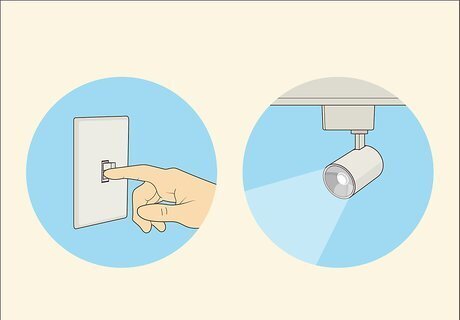
Turn on the light to check your work. Once the new light bulb is in place, turn the light switch back on. If the new bulb is in working condition and has been installed correctly, the light should come on. If the light doesn't go on, you may have a problem with the connection on the track, the connection of the bulb, or the bulb itself. Turn off the switch and try reinserting the fixture on the track first. If this doesn't work, check that the bulb is firmly in place. If these fixes don't work, put a new bulb in the fixture.
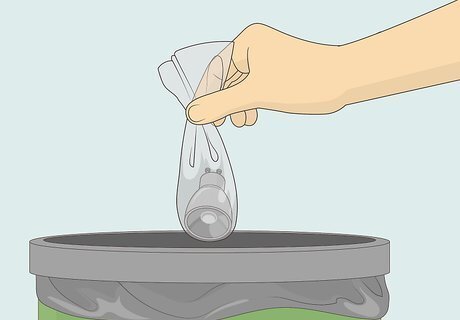
Discard light bulbs correctly. While incandescent and LED bulbs can go in the garbage (in most places, depending on your municipality), CFLs cannot. However, you may be able to recycle newer types of bulbs. Consult your local recycling program to find out if your specific light bulb can be recycled. Most light bulbs can be recycled at drop-off locations or IKEA. It is especially important to recycle bulbs that contain mercury, such as CFLs. If these bulbs are put in your garbage, they can end up contaminating the environment (including water supply) with mercury.















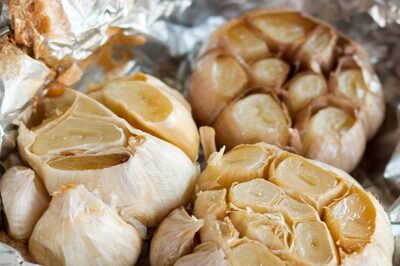
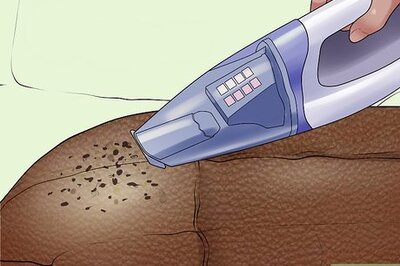


Comments
0 comment